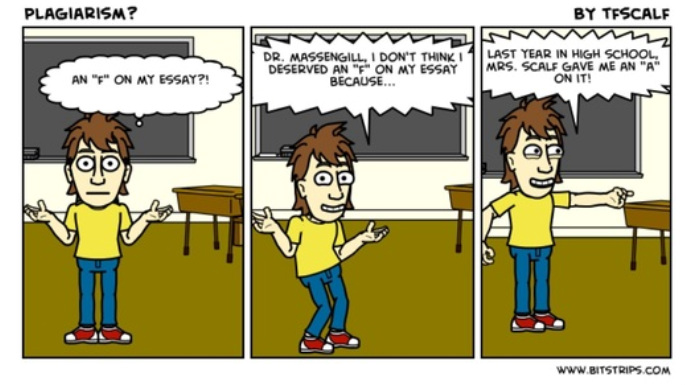How to steer clear
Most students are aware of what plagiarism is – the copying of other peoples’ ideas, data, images and so on, and presenting of them as if they were our own. Self-plagiarism is a little different. This happens when an author (student, writer, etc) whole or part of our own previously published or submitted ideas, text, data, images and so on.
The most common type of self plagiarism is duplicate publication but there are other ways to self plagiarise. These may include redundant publication, augmented publication (or “meat extender”), and segmented publication (or “salami”, “piecemeal” or “fragmented” publication).
- Duplicate publication: (Often in the contex of scientific journals) this is the practice of submitting a paper with the same data to more than one journal, without alerting the readers to the existence of other identical published versions.
- Redundant publication: This occurs when researchers publish the same data, with a somewhat different textual slant within the body of the paper.
In all cases, the underlying theme is that there are significant similarities between publications and an absence of a clear indication as to the relationship between the various versions of the paper.

It is of course more harmful when this is deliberate. Sometimes students make a concerted effort to conceal the fact that the same data, text or images are being republished more than once. In these cases they might, for example, make textual changes and/or delete or amend certain references, or alter the structure / formatting the work. Again, the key component of self-plagiarism in these cases is that the new paper makes no reference to the previous paper or if it cites the previous paper, it does so in such an ambiguous manner that the exact relationship between the two papers would not really be appreciated by the reader.
So why shouldn’t you self plagiarise? When a tutor sets an assignment for you, they want you to do original research and writing in relation to that assignment. This is all part of the learning process. If you copy your past work, you won’t be going through that learning process. If you want to make reference to past work, that’s fine – but give it proper attribution (a reference) so that your tutor can understand the relationship between old and new papers, and should the parts you’re using be flagged up by your university plagiarism scanner, there will be no accusation of plagiarism.
You can avoid accidental self plagiarism by ensuring you always use a plagiarism checker like plagiarismchecker.net and index your past documents as part of the scanning process.
The facts in this article were taken from Miguel Roig (2010) Plagiranje i samoplagiranje: Što bi trebao znati svaki autor, Biochemia Medica; 2010, Vol. 20 Issue 3, p295-300, 6p


